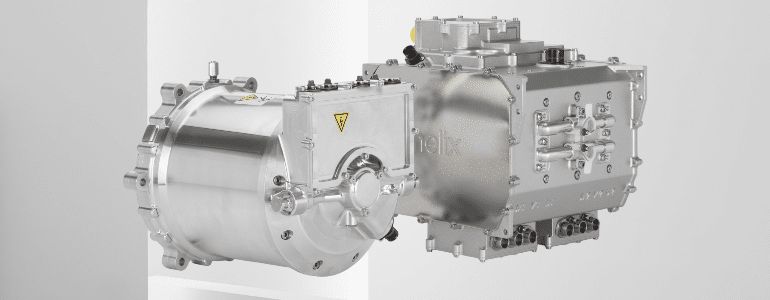
Taking the MBSE Approach to a Sustainability Strategy
Table of contents
In this interview, the experts at Helix share insights into the intersection of sustainability and innovative engineering practices. So, let’s go explore the crucial role of MBSE in driving eco-friendly innovation and its potential to reshape the way we design, manufacture, and utilize electric vehicles.
The Evolution of Sustainability Strategy in Engineering
For Helix, sustainability has always been at the core of their engineering journey. From the initial stages of their company to their current position in the electric vehicle industry, they’ve witnessed a significant shift in how sustainability is approached within the engineering realm.
Helix’s sustainability strategy takes much more into consideration than just CO2 emissions. They’re taking a comprehensive approach that considers environmental, social, and governance factors in the development and operation of products.
“Sustainability is a key agenda point […] Our products, in use, provide massive benefits. So, most of the CO2 or CO2 equivalent benefit comes from just using the product. But we also have to be mindful and work towards sustainability in the manufacturing and end of life.”
Andrew Cross, CTO | Helix
When discussing the integration of sustainability and engineering, MBSE is a game-changer. Helix believes that MBSE offers a powerful framework to design and optimize electric vehicles for sustainability.
By utilizing digital models that capture the entire lifecycle of a vehicle, MBSE enables engineers to evaluate the environmental impact, performance, and efficiency of different design choices at every stage.
Driving Efficiency and Collaboration
One of the key advantages of MBSE lies in its ability to foster collaboration and streamline communication among interdisciplinary teams. Helix emphasizes that efficient collaboration is essential for achieving sustainability goals in the EV industry.
With MBSE, engineers can work seamlessly across domains, sharing data and insights to collectively optimize vehicle designs, reduce waste, and maximize energy efficiency.
This collaborative approach ensures that Helix’s sustainability strategy is integrated from the outset and that the entire development process aligns with environmentally conscious principles.
“Effectively, it’s having an end-to-end model-based description of your system, where you try to maintain a common set of interfaces between each key element of the system. But you can have different models with different levels of granularity and detail and execution speed that you can drop in place[…] The benefits in terms of product quality and the environmental impacts are absolutely enormous.”
Andrew Williamson, Controls Systems Manager | Helix
Optimizing Material Usage with Lifecycle Management
MBSE provides invaluable tools for optimizing material usage and enhancing lifecycle management in electric vehicle manufacturing. Helix highlights the significance of considering recyclability and reusability when selecting materials for EV components.
By adopting a circular thinking approach, engineers can design vehicles that are easily repairable, with reusable parts and recyclable materials.
This shift toward circularity not only minimizes waste but also paves the way for sustainable end-of-life management, reducing the environmental impact of EV disposal.
Simulation and Virtual Prototyping
Simulation and virtual prototyping are integral to MBSE and play a vital role in sustainable EV creation. Helix explains that these technologies enable engineers to evaluate multiple design scenarios, simulate performance under various conditions, and optimize energy efficiency.
By virtually testing different configurations and parameters, manufacturers can identify optimal solutions that maximize sustainability without sacrificing performance or safety. This iterative process empowers engineers to make informed decisions, leading to the development of more environmentally friendly electric vehicles.
The Impact of MBSE on EV Sustainability Strategy
Looking ahead, the experts at Helix see a future where MBSE is a driving force behind sustainable electric mobility. They believe that the adoption of MBSE principles and practices will lead to the creation of highly efficient, eco-friendly vehicles that meet the evolving needs of customers and the planet.
As the automotive industry continues its transition toward sustainable practices, Helix encourages companies to embrace MBSE as a strategic enabler of innovative, environmentally conscious design, manufacturing, and operation of electric vehicles.
In Our Experience…
It’s difficult to ignore the potential for Model-Based Systems Engineering to revolutionize product creation and foster sustainability within every industry.
As we’ve learned from Helix, engineers working with MBSE can design and optimize electric vehicles with a comprehensive understanding of their environmental impact. This is a huge opportunity for the automotive industry to accelerate the shift toward eco-friendly mobility solutions.
As sustainability takes center stage in the pursuit of a greener future, MBSE stands as a transformative approach that holds the key to shaping the future of electric mobility.


